THE YORKSHIRE RAMBLERS’ CLUB 1892-1992
Based on an article by Arthur B Craven, YRCJ 1992; 11(40): 1-5
Looking back 40 years on, the first President of the Yorkshire Ramblers’ Club, George T. Lowe, writes that, on a Three Peaks Walk at Whitsuntide 1892, he told his companion that he “would approach all the men I knew to be interested in rambling over our Yorkshire moors and fells with a view to forming a club and thus improving the chances of collecting larger groups for our outings“.
On 13th July 1892 he and three friends, J.A Green, H.H. Bellhouse and Herbert Slater, discussed the formation of a club, drew up outline proposals and a rough draft of rules and called an inaugural meeting at the Skyrack Inn, Headingley, Leeds on 6th October 1892. Nine men attended and it was decided to form a club. Thirteen members were elected forthwith. George Lowe was appointed President, J. A. Green Secretary and H. H. Bellhouse Treasurer, and a small committee was also elected.
The name of the club was picked from others including the Three Peaks Club (considered to be far too limiting), but Yorkshire understatement prevailed and the Yorkshire Ramblers’ Club was chosen. Thus, the second English mountaineering club was born, the first being the Alpine Club in 1865.
Initially two meetings were held in the smoke-room of the Skyrack Inn in each winter month, at which papers were read by members on their excursions, and one meeting in each summer month for arranging expeditions. The first club meet outside Leeds was held at Christmas 1892 at the Hopper Lane Hotel at Blubberhouses, between Harrogate and Skipton.
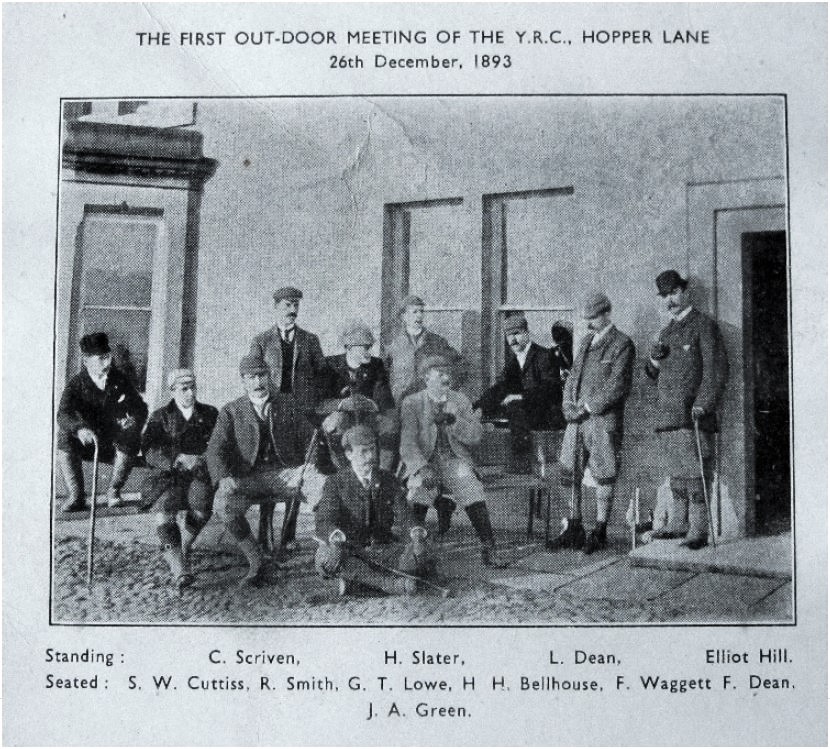
It was not long before George Lowe was writing that “members soon took an increasing interest in climbing. It has extended the original ideas of the founders and the prominence given to this elevating branch of sport has considerably widened the scope of the club“.
To promote this interest within the club and to establish the standing of the club in Leeds and Yorkshire, eminent mountaineers were invited to give public lectures at the Philosophical Hall in Leeds. The first of these was by Wm Cecil Slingsby (the Yorkshireman who was to become the father of Norwegian mountaineering) in 1893 on “Rock Climbing and Snowcraft“; followed by Edward Whymper (of Matterhorn fame) in 1894 on the “The Andes“; Herman Woolley in 1895 on “The Caucasus“; Charles Matthews (first President of the Climbers’ Club) in 1896 on “Mont Blanc“; then Norman Collie; Charles Pilkington; Mrs Aubrey Le Blond and many others.
Whymper and Slingsby were invited to become Honorary Members as were two other prominent personalities: the Duke of Devonshire and the Earl of Wharncliffe, who each had estates where members might walk and climb. The good counsel and practical encouragement from these individuals added much to the early success of the Club.
Lectures continued in the club’s proceedings until 1925, when Bentley Beetham, a club member, spoke on the 1924 Everest expedition, in which he had participated. Lack of support in 1926 saw the end of this tradition apart from brief revivals in 1930 and 1932, when Frank Smythe, also a member, gave lectures on the ascents of Kangchenjunga and Kamet.
At the first Annual General Meeting in 1893, Wm Cecil Slingsby was elected President, an office in which he led the club with great distinction until 1903. By then, Slingsby had already made his mark on the development of mountaineering in Norway with an impressive list of first ascents. He gave an account of his climbing and mountaineering exploits between 1872 and 1903 in his book “Norway: The Northern Playground” published in 1904.
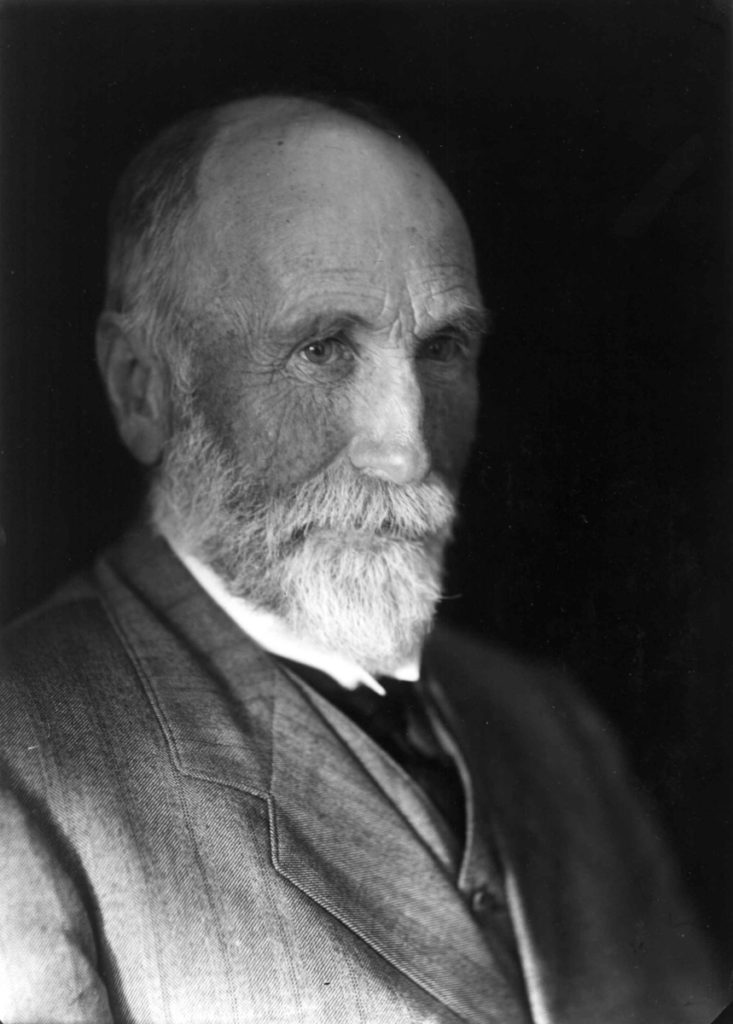
The club library was started in 1893 and the Journal in 1899 with Thomas Gray as its first editor. H.H. Bellhouse in his article on the formation of the club writes, “parties, excepting for the Annual Meet, are never made up officially, but the many informal, not unlooked for, but not prearranged gatherings at Wasdale, Pen y Gwryd and elsewhere add not a little to the pleasures and advantages of membership“.
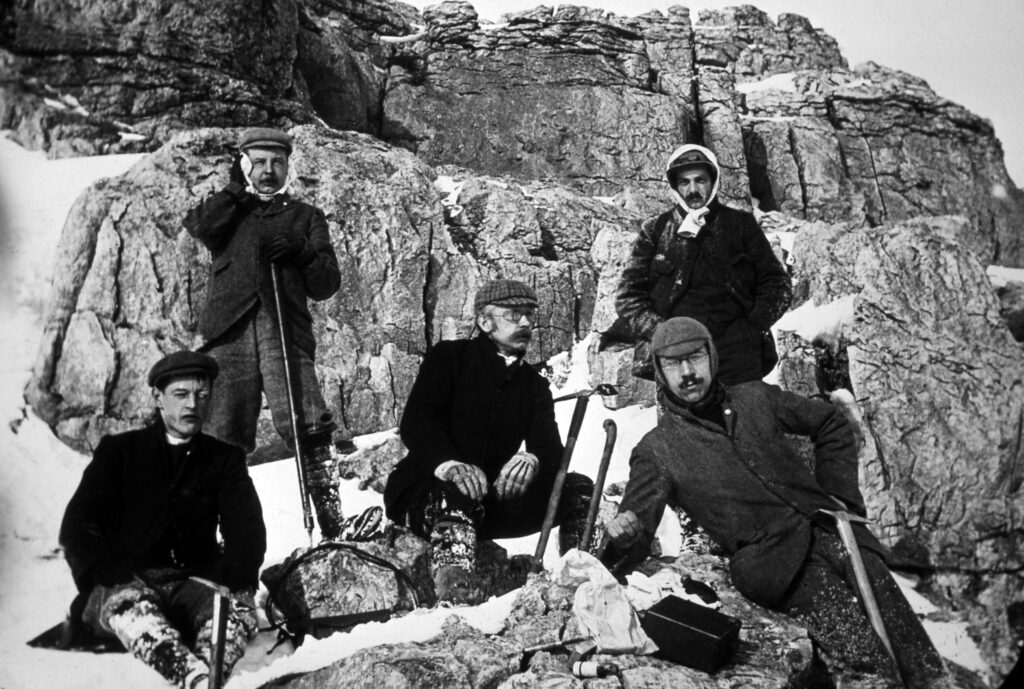
The Annual Club Meet features in the club Proceedings up to the seventh such meet in 1903. It is mentioned again in 1907 and at the Hill Inn in 1910. But other club meets also begin to feature in club Proceedings: two in 1901, six in 1902, including an Easter meet in Langdale and a Whit meet at Thornton-in-Lonsdale. This pattern continues into the 1920s. The number of official club meets then slowly increased to its present level of 18 to 20 per year.
Commemorating the first 21 years of the club’s existence in 1913, the President, W. Parsons, could write, “Its members have probably ascended every important peak in the Alps, have explored the Caucasus, have corrected our schoolboy knowledge of the Canadian Rockies, have practically taught the Norwegians their own country, have conquered virgin peaks in the Himalayas, have done a large amount of original work in our British crag districts, have made descents – in nearly every case first descents – of our Yorkshire pot-holes …“
The Presidential pride and panache of that statement contrast sharply with the comments, in his correspondence with the club’s editor, by that great but abrasive protagonist of the Alps, the Rev. W.A.B. Coolidge, that “all this scrambling in the British Isles does not commend itself to me as a form of mountaineering” and “I deny further that the qualities required for cave hunting in any way resemble those required in mountaineering“.
It can at least be said that the club had some outstanding rock climbers in J.W. Puttrell of the Keswick Brothers’ Climb on Scafell, Fred Botterill of the North West Climb on Pillar, Slanting Gully on Lliwedd, and Botterill’s Slab on Scafell, and Claude D. Frankland of Esk Buttress and the Green Crack on Almscliff, where William Parsons also left his mark with his famous Chimney on the NW face.
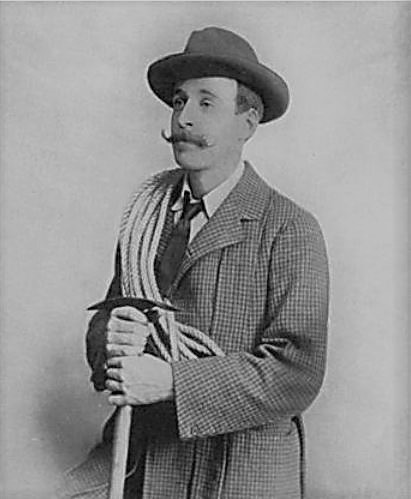
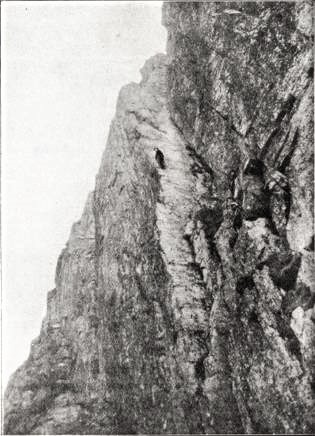
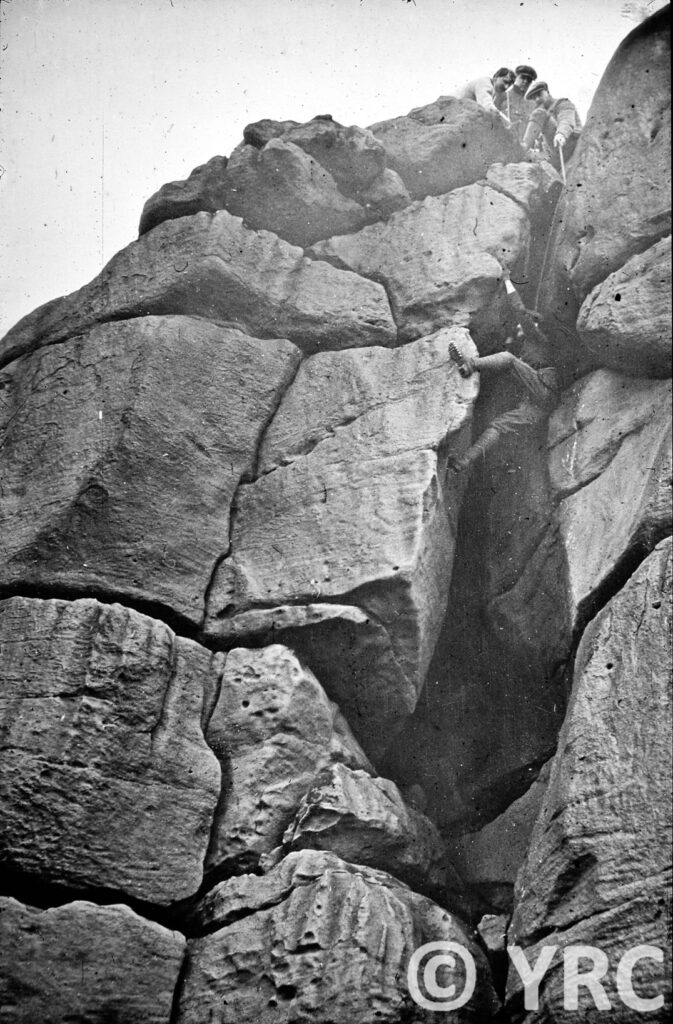
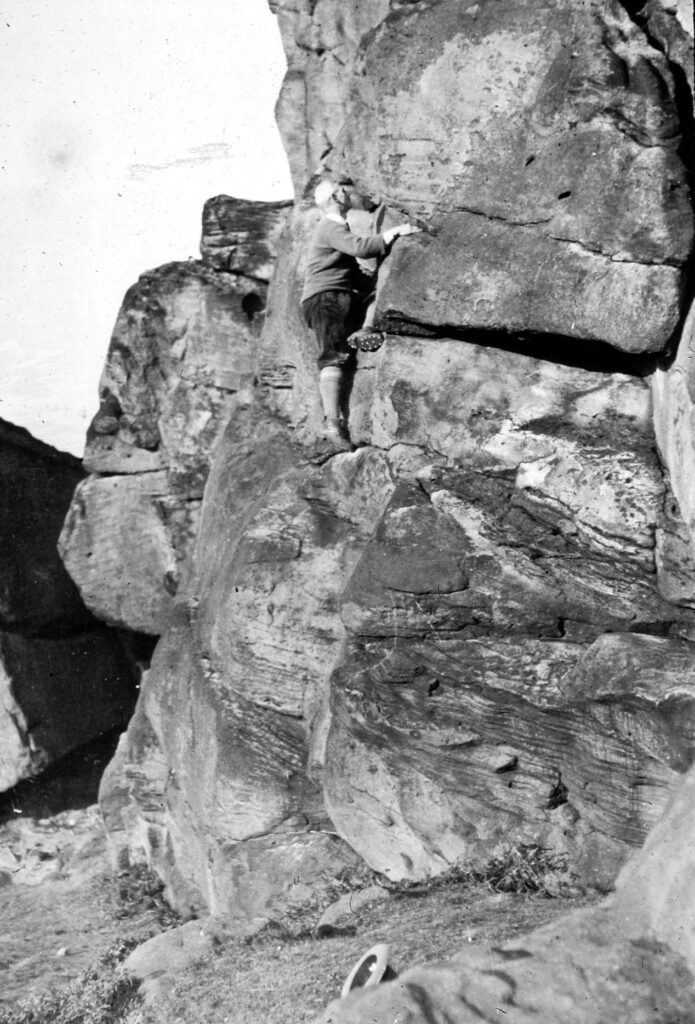
“A compelling line of huge historical significance – outstanding” (FRCC Guidebook)
This list of major mountain areas in which members have climbed is wider now than those mentioned above and includes in addition to the Alps and Norway the Dolomites, Austria, the Rockies (American as well as Canadian), the Pyrenees, the Carpathians, the High Atlas, the Tatra, the Andes (Bolivian and Peruvian), Greenland, Turkey, Korea, Japan and the Himalayas.
And, because the limestone area of the Yorkshire Dales was in their parish, the club took up caving and potholing on a major scale. Slingsby had none of Coolidge’s doubts. In 1900 he wrote, “the YRC has a speciality, cave hunting …. Caves first, caves second and caves third“.
In August 1895, the French caver, Édouard-Alfred Martel, had made the first descent of the 350-feet main chamber of Gaping Gill, the greatest of the Yorkshire potholes. It was an outstanding performance using rope-ladders. Martel, who was made an Honorary Member in 1906, devoted a chapter to this exploration in his 1897 book “Irelande Caverns Anglaises” which has recently been given a new translation. In May 1896 the club made its first descent using a windlass and bosun’s chair – two minutes down and four minutes up. Further descents for exploration and surveying were made in 1904, 1905, 1906 and 1908. From 1909, when a club party was trapped in Gaping Gill by flood for 40 hours, until 1938, a camp was held at Gaping Gill each year at Whitsuntide and exploration of the pothole was steadily pursued. Kindred clubs frequently attended this meet and it is recorded that on one occasion six members of the Pinnacle Club joined the descent.
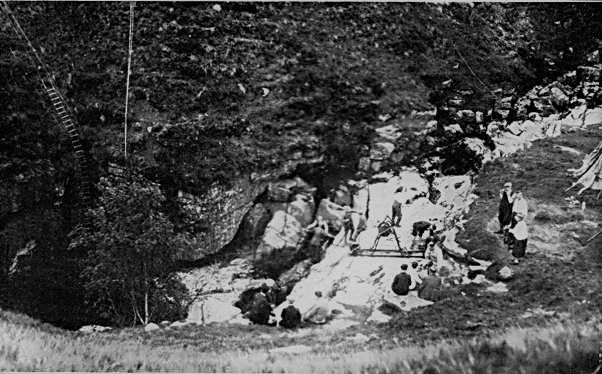
In the first five volumes of the club Journal there are 16 main articles on Gaping Gill and in the next two volumes a further 13 entries in “Cave Exploration“.
These are a measure of the effort put into the exploration of this most impressive cave. In 1896, descents also include Troller’s Hole, Clapham Cave, Long Kin West, Long Kin, Rowten Pot, Sell Gill Hole, Pillar Pot 1, Jingling Hole, and in 1897, Marble Steps, Death’s Head Hole, Bull Pot, Lost John’s Cave, Short Drop Cave to Gavel Pot, Hunt Pot, Cross Pot. That level of activity continued into the 1930s. The commitment was tremendous. There are no major Yorkshire potholes which have not been bottomed by the club, many as first descents, which in the case of Mere Gill took nine years to complete.
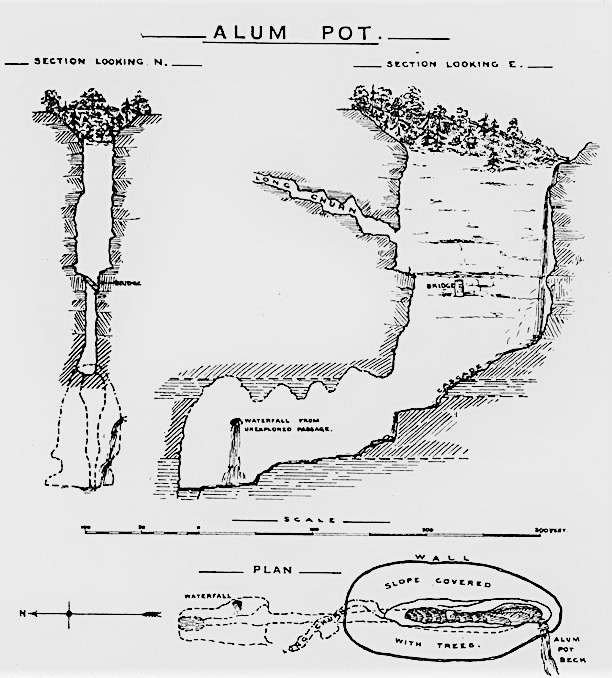
The club also made a significant contribution to caving in Ireland. Between 1907 and 1963 there had been 14 meets in Fermanagh, five in County Clare and two in Leitrim/Sligo. The Golden Age of Potholing, when there were still new potholes to be found, was said to be coming to a close in the 1930s. But new discoveries and extensions in known potholes continued after the end of the War, many of them involving extensive digging and some diving. This was also a period of joint club potholing abroad and YRC members were involved in expeditions in Austria, Italy, France, Spain, Switzerland, Yugoslavia, Morocco, Turkey, the Lebanon, Iran, Ecuador, Mexico and Peru.
In 1908, Ernest Roberts joined the club and made a great contribution to it. He was an excellent potholer, a very good Alpinist, and from 1921 to 1947 an influential editor of the journal. He was probably better informed about developments in caving, certainly about potholing in Yorkshire, than any of his contemporaries and his journal feature, “Cave Exploration: New Discoveries“, which included the activities of kindred clubs, was an invaluable record. It was also largely due to him that the club’s safety record over 100 years of intensive caving had been so good – three accidents, none fatal. Roberts insisted that “parties entering pot-holes should treat them with the same respect as should be exercised on a big mountain” and evolved safety techniques in accordance with this view. Two other points might be mentioned in connection with the club’s potholing – the high standards of its surveying and the excellence of the resulting plans. The immense contribution to caving that the YRC made over its first 100 years has been critically appraised by Stephen Craven in his article: A Speleological Appreciation of the YRC on the Occasion of its Centenary 1892-1992.
After the first Club Dinner in 1901, a second one was arranged at the Hotel Metropole in Leeds to celebrate the club’s tenth anniversary in 1902. The first Annual Club Dinner was held in February 1903, at the same hotel, which remained the venue until the 43rd Annual Club Dinner in November 1956. Since then it has been held at various hotels in Harrogate, Ilkley and Skipton with varying satisfaction.


First and Second Dinner Menu Cards from 1901 and 1904
Another club tradition was the Hill Inn meet at Chapel-le-Dale. There was a meet there in 1910 and another in 1920. Then from 1924 until 1970 there was a meet in January and February each year including the War years. Until 1960 the hosts at the Inn were Mr and Mrs John Kilburn, who were succeeded from 1961 to 1963 by their son. Attendance at these meets reached as high as 80.
In 1950 the club secured the tenancy of Low Hall Garth in Little Langdale from the National Trust. This provided a very acceptable climbing base in the Lake District and the advantages of reciprocal rights with kindred club huts.
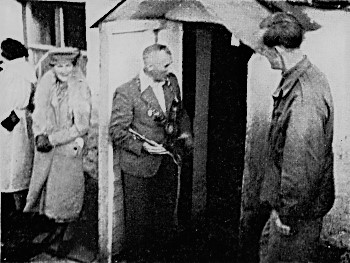
The club library, founded in 1893, had grown steadily and its housing and availability presented problems. In 1952 the collection was placed in the Reference Library of Leeds City Libraries for a trial period of three years. At the end of the trial period the club confirmed the arrangement.
Although member Geoffrey Hastings climbed on Nanga Parbat with Mummery and Collie in 1895, one is inclined to think that the world of the mountaineer is wider today than it was in the early days of the YRC; that is until one reads the exploits of members in our journals. Many will have read of Whymper’s activities in the Andes. Fewer will know of Morris Slingsby’s crossing of the Eastern Karakorum range to discover the 49-mile long Siachen glacier in 1909 with another Yorkshire man Tom Longstaffe or his attempts on Kamet (7756m) in 1911 and 1913. Kamet fell to another YRC member, Frank Smythe, who made the first successful ascent in 1931. The Club donated 100 guineas. Smythe is perhaps better known for his Everest expeditions in 1933 and 1936, as well as his many books on his mountaineering – the Chris Bonington of his age!
From the 1920’s, the YRC supported the Everest expeditions. In 1953, a 30 ft length of YRC potholing ladder, which we donated, was used by heavily laden Sherpas crossing the Khumbu icefall to supply Camp 2 during Hillary and Tensing’s successful attempt. The ladder is now on display in the International Mountain Museum in Pokhara, Nepal.
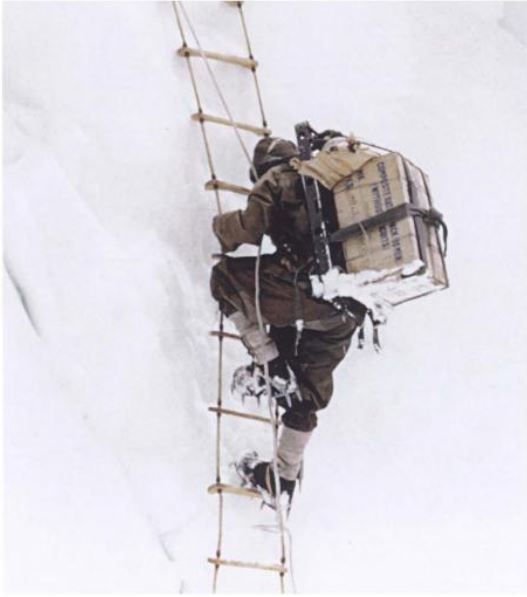
In 1957, the YRC was the first British Club to send out its own Himalayan expedition. The area chosen was the Jugal Himal in Nepal. Few of the peaks in this area had been climbed, and the area had never been fully surveyed. The highest peak at 7083m is the Great White Peak (now known as Loengpo Gang) on the Tibetan/Nepalese border. The expedition was asked to carry out a survey, which was very largely completed, and the mountaineering goal was to climb the Great White Peak. Sadly, the attempt ended in tragedy: the expedition leader, Crosby Fox, and two Sherpas were killed in an avalanche. You can read more in the Expedition Report.
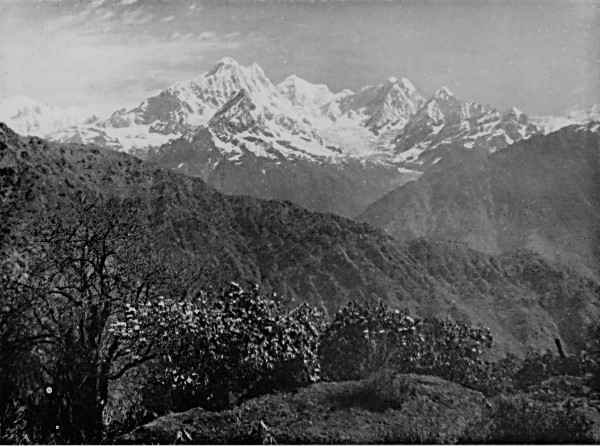
The tenancy of a second club hut, Lowstern, was agreed in 1958 with the Farrer Estate in Clapham to serve as a pot-holing base in Yorkshire. The original building, which had been the estate golf house, was demolished and rebuilt by the club in 1989.
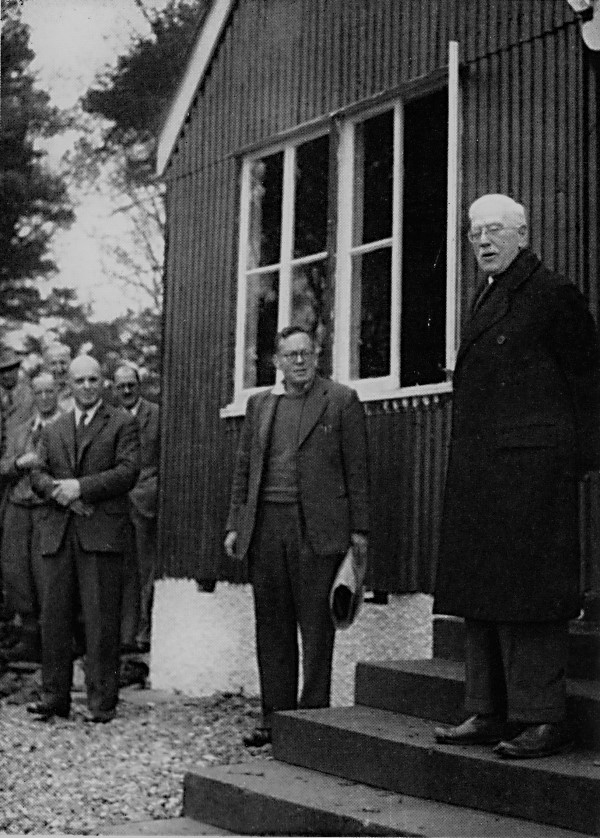
A further development in 1986, and in each year from 1988 to 1992, has been a club meet in the Alps. These meets have been very well supported and highly successful.
A generation on from the 1957 expedition, growing interest the Greater Ranges resulted in the 1988 Club expedition to the Bolivian Andes. Two years in the planning, the expedition made a number of ascents in the Apolobamba and Cordillera Real, including the first ascent of the West ridge of Cololo (5915m). You can read more in the expedition report.
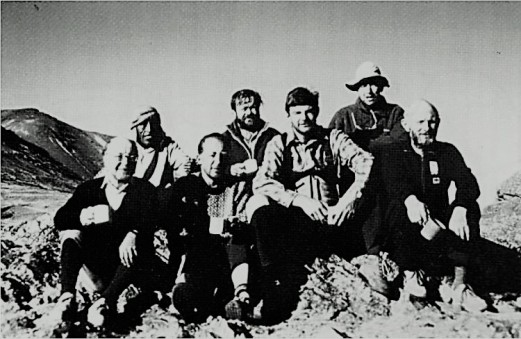
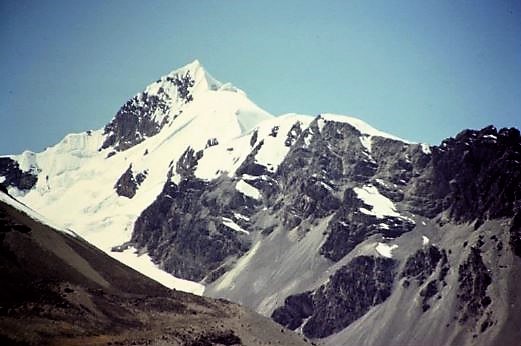
Since the club was first conceived as a walking club, it might be fitting to mention the walk completed in 1901 by R.W. Broadrick of the YRC and a companion, a Mr Dawson, of Sale in Cheshire – “a great road walker“. Starting at Rosthwaite in Borrowdale, their route included Great Gable, Pillar, Wasdale Head, Scafell, Scafell Pike, Great End, Bowfell, Grasmere, Fairfield, Helvellyn, Threlkeld, Blencathra, Skiddaw, Keswick and back to Rosthwaite – 70 miles and 18,000 feet of ascent in 23 hours and 28 minutes. No wonder the club took to climbing and potholing!
In 1952, our Diamond Jubilee year, the author Richard Lister spent a weekend with the Club, who took him potholing and he made a succinct observation about our club name which is still very true today. He wrote an amusing article about his experience which was published in Punch Magazine.
The significance of the word ‘rambler’ appears to have changed considerably since the Yorkshire Ramblers’ Club was formed. It has had ample time to do so. That body is celebrating this year the Diamond Jubilee of its foundation. It has spent the sixty glorious years since 1892 in indefatigably clinging by its teeth to overhanging crags, swarming up wholly inaccessible pinnacles and plunging through torrents of cold water into vertical abysses. There is only one thing it has failed to do in those sixty years; it has never, in any normally accepted sense of the term, rambled.
Punch Magazine August 27, 1952
Arthur Craven concluded his article as follows:
The club has had a successful and enjoyable 100 years. It has much of which to be proud and is in good heart. It is attracting young new members of encouraging potential to start on the next 100 years.
The years since our centenary proved him correct.
Read about the next chapter in the YRC’s history – The 100th Birthday Celebrations